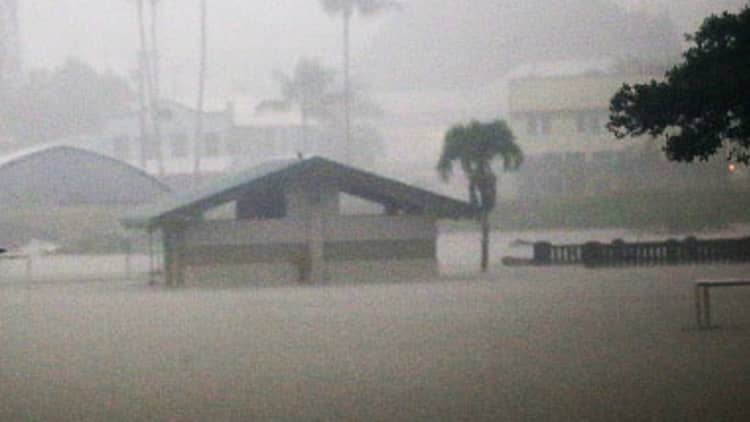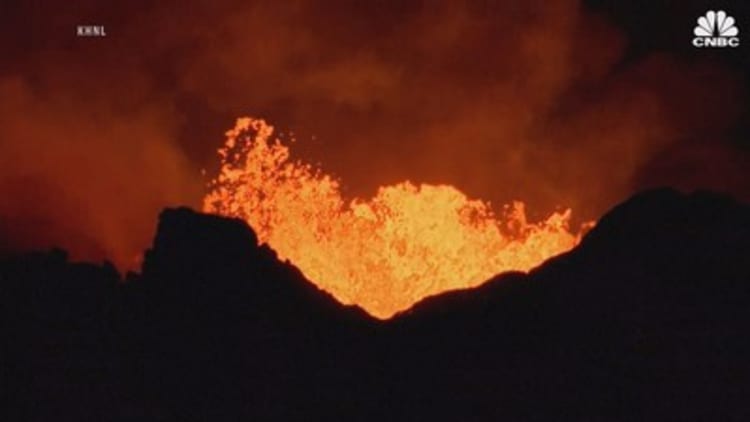The rare, severe hurricane barreling toward Hawaii with 120 mph wind could produce "whiteout conditions," life-threatening flash floods and landslides as it hits the island's still-erupting Kilauea volcano, according to U.S. weather officials.
It also has the potential to increase the intensity of lightning and thunderstorms within Hurricane Lane, scientists say.
The Category 3 storm is the first true hurricane to hit Hawaii since Hurricane Iniki in 1992, and it arrives just as Kilauea is at its most active. The volcano has been erupting since May 3 but has substantially slowed over the summer. That's good for Hawaiians as it will dampen the volcano's otherwise potentially severe impact on the storm.

"Other volcanoes have interacted with hurricanes and the results have been disastrous," said Tracy Gregg, an associate professor of geology at the University of Buffalo. "Kilauea is being polite, in comparison."
Volcanic eruptions have the most potential for catastrophe when they are spewing huge columns of ash and gas into the atmosphere, like Mount St. Helens in 1980 or Pinatubo in 1991, scientists say.
"They are putting heat and ash into the atmosphere and that interacts with the moisture in the hurricane and can cause the ash to glob into little balls while it is up in the air and fall down as essentially hail stones" and cause landslides, Gregg said.
Gregg described it as "two monsters passing in a closet. They are really not going to notice each other. They are just going to keep doing what they do."
In 2013, eruptions from Kilauea blew microscopic, gasses and particles into Tropical Storm Flossie — and increased the intensity of thunderstorms and lightning around the storm, according to a 2014 study by the University of Hawaii at Manoa.
The U.S. Geological Survey said Hurricane Lane could produce "whiteout conditions" around the lava field as the rain hits the hot molten rock. Einat Lev, a volcano scientist at Columbia University's Lamont-Doherty Earth Observatory, said the steam caused by the rain hitting the hot lava could affect visibility, especially for helicopters flying around the island.
The steam is loaded with particles and toxic gases, such as hydrochloric acid. These gases are called "laze" and typically occur when lava hits cool ocean water. It is possible that heavy winds could blow the laze from the shoreline back onto the island, Lev said.
While rain from Hurricane Lane is not expected to significantly increase the laze, the hurricane still poses a substantial risk for islanders. Lane, which slowed from a Category 4 to a Category 3 overnight, has already dumped more than 31 inches on parts of Hawaii's Big Island as it slowly moved at 6 mph.
"Excessive rainfall associated with this slow moving hurricane will continue to impact the Hawaiian Islands into the weekend, leading to significant and life-threatening flash flooding and landslides," the National Hurricane Center said in a weather advisory.
Correction: This story was revised to correct that the hurricane was moving at 6 mph and to clarify that its wind speed was 120 mph.
WATCH: Explosion at Hawaii volcano spews ash



